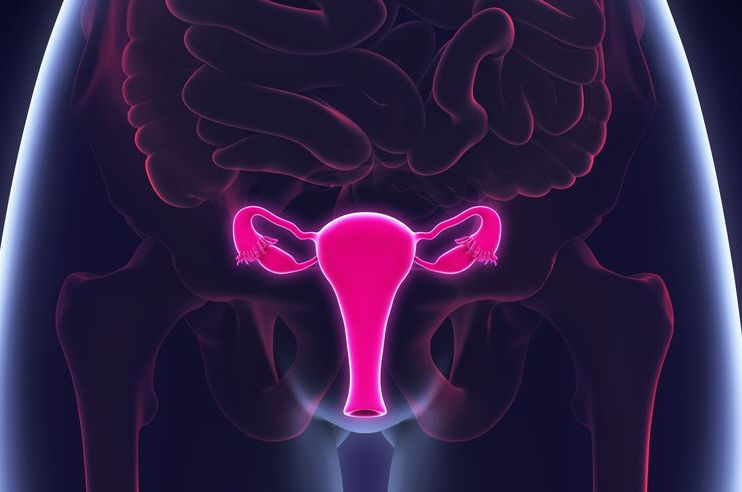D & C | Dilation and Curettage
Dilation and curettage (D&C) is a brief surgical procedure in which the cervix is dilated and a special instrument is used to scrape the uterine lining. Knowing what to expect before, during, and after a D&C may help ease your worries and make the process go more smoothly. Here’s what you need to know.
Dilation and curettage (D&C) is a brief surgical procedure in which the cervix is dilated and a special instrument is used to scrape the uterine lining. Knowing what to expect before, during, and after a D&C may help ease your worries and make the process go more smoothly. Here’s what you need to know.
Reasons for a D&C
You may need a D&C for one of several reasons.
It’s done to:
Remove tissue in the uterus during or after a miscarriage or abortion or to remove small pieces of placenta after childbirth. This helps prevent infection or heavy bleeding.
Diagnose or treat abnormal uterine bleeding. A D&C may help diagnose or treat growths such as fibroids, polyps, hormonal imbalances, or uterine cancer. A sample of uterine tissue is viewed under a microscope to check for abnormal cells.
What to Expect When Having a D&C
You can have a D&C in your doctor’s office, an outpatient clinic, or the hospital. It usually takes only 10 to 15 minutes, but you may stay in the office, clinic, or hospital for up to five hours.
Before a D&C, you will have a complete history taken and sign a consent form. Ask your doctor any questions you have about the D&C. Be sure to tell the doctor if:
You suspect you are pregnant.
You are sensitive or allergic to any medications, iodine, or latex.
You have a history of bleeding disorders or are taking any blood-thinning drugs.
You will receive anesthesia, which your doctor will discuss with you. The type you have depends on the procedure you need.
If you have general anesthesia, you will not be awake during the procedure.
If you have spinal or epidural (regional) anesthesia, you will not have feeling from the waist down.
If you have local anesthesia, you will be awake and the area around you cervix will be numbed.
Before the D&C, you may need to remove clothing, put on a gown, and empty your bladder.
During a D&C, you lie on your back and place your legs in stirrups like during a pelvic exam. Then the doctor inserts a speculum into the vagina and holds the cervix in place with a clamp. Although the D&C involves no stitches or cuts, the doctor cleanses the cervix with an antiseptic solution.
A D&C involves two main steps:
Dilation involves widening the opening of the lower part of the uterus (the cervix) to allow insertion of an instrument. The doctor may insert a slender rod (laminaria) into the opening beforehand or use a medication before the procedure to soften the cervix and cause it to widen.
Curettage involves scraping the lining and removing uterine contents with a long, spoon-shaped instrument (a curette). The doctor may also use a cannula to suction any remaining contents from the uterus. This can cause some cramping. A tissue sample then goes to a lab for examination.
Sometimes other procedures are performed along with a D&C. For example, your doctor may insert a slender device to view the inside of the uterus (called hysteroscopy). They may remove a polyp or fibroid.
After a D&C, there are possible side effects and risks. Common side effects include:
Cramping
Spotting or light bleeding
Complications such as a damaged cervix and perforated uterus or bladder and blood vessels are rare. But be sure to contact your doctor if you have any of the following symptoms after a D&C:
Heavy or prolonged bleeding or blood clots
Fever
Pain
Abdominal tenderness
Foul-smelling discharge from the vagina
In very rare cases, scar tissue (adhesions) may form inside the uterus. Called Asherman’s syndrome, this may cause infertility and changes in menstrual flow. Surgery can repair this problem, so be sure to report any abnormal menstrual changes after a D&C.
Recovery After a D&C
After a D&C, you will need someone to take you home. If you had general anesthesia, you may feel groggy for a while and have some brief nausea and vomiting. You can return to regular activities within one or two days. In the meantime, ask your doctor about any needed restrictions. You may also have mild cramping and light spotting for a few days. This is normal. You may want to wear a sanitary pad for spotting and take pain relievers for pain.
You can expect a change in the timing of your next menstrual period. It may come either early or late. To prevent bacteria from entering your uterus, delay sex and use of tampons until your doctor says it’s OK.
See your doctor for a follow-up visit and schedule any further treatment that’s needed. If any tissue was sent for a biopsy, ask your doctor when to expect results. They are usually available within several days.

Lorem ipsum dolor sit amet, consectetur adipiscing elit. Phasellus ac aliquam velit. Phasellus dapibus cursus erat, quis consequat urna efficitur non. Phasellus cursus, erat quis mollis lobortis, urna risus hendrerit metus, id dictum metus purus vel magna. Nulla non purus sit amet arcu convallis egestas
Lorem ipsum dolor sit amet, consectetur adipiscing elit. Phasellus ac aliquam velit. Phasellus dapibus cursus erat, quis consequat urna efficitur non. Phasellus cursus, erat quis mollis lobortis, urna risus hendrerit metus, id dictum metus purus vel magna. Nulla non purus sit amet arcu convallis egestas
Lorem ipsum dolor sit amet, consectetur adipiscing elit. Phasellus ac aliquam velit. Phasellus dapibus cursus erat, quis consequat urna efficitur non. Phasellus cursus, erat quis mollis lobortis, urna risus hendrerit metus, id dictum metus purus vel magna. Nulla non purus sit amet arcu convallis egestas

COSMETIC SURGERY
Lorem ipsum dolor sit amet, consectetur adipiscing elit. Ut elit tellus, luctus nec ullamcorper mattis, pulvinar dapibus leo.

COSMETIC SURGERY
Lorem ipsum dolor sit amet, consectetur adipiscing elit. Ut elit tellus, luctus nec ullamcorper mattis, pulvinar dapibus leo.

COSMETIC SURGERY
Lorem ipsum dolor sit amet, consectetur adipiscing elit. Ut elit tellus, luctus nec ullamcorper mattis, pulvinar dapibus leo.
